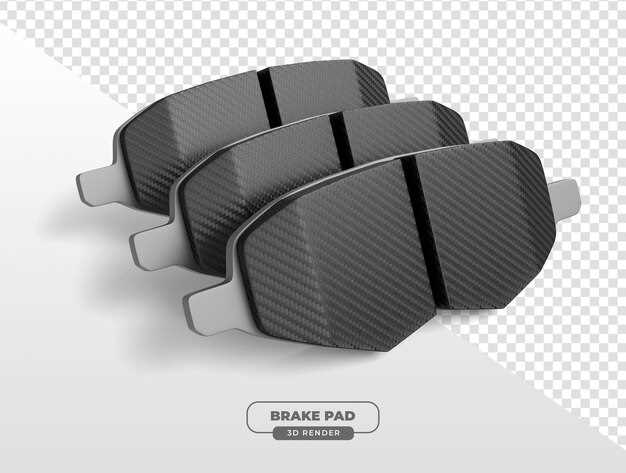
The selection of materials plays a crucial role in the design and performance of various products, from automotive components to sporting goods. Among the myriad of options available, carbon fiber and fiberglass stand out as two popular choices, each with distinct characteristics that cater to different applications and preferences.
Carbon fiber is renowned for its exceptional strength-to-weight ratio, making it a go-to option for performance-driven industries. Its rigidity and durability offer advantages in high-stakes environments, such as aerospace and automotive applications. Conversely, fiberglass, while typically heavier, is celebrated for its versatility and cost-effectiveness. This material is often favored in applications where flexibility and ease of manipulation are paramount, such as in the construction of boats and insulation panels.
Understanding the fundamental differences between these materials is essential for making an informed decision. Factors such as weight, strength, cost, and ease of manufacturing all contribute to the suitability of either carbon fiber or fiberglass for specific projects. In the following sections, we will delve deeper into the attributes of each material, providing insights that aid in determining which one aligns best with your particular needs and objectives.
Cost Analysis: Comparing the Price Points of Carbon Fiber and Fiberglass

When evaluating materials for various applications, cost is a critical factor that influences decision-making. Carbon fiber and fiberglass represent two popular choices, each with distinct pricing structures. Carbon fiber generally commands a higher price due to its advanced manufacturing process, material properties, and demand in high-performance sectors such as aerospace and automotive industries. The average cost of carbon fiber can range from $15 to $30 per pound, depending on the quality and specific type.
Fiberglass, on the other hand, is more cost-effective, with prices typically ranging from $2 to $6 per pound. Its affordability makes it a prevalent option for a wide range of applications, from boat construction to insulation materials. This price differential can significantly impact budget constraints for projects, especially in large-scale manufacturing or prototyping scenarios.
In terms of overall investment, it’s essential to consider not only the upfront material costs but also the long-term implications of performance and durability. While carbon fiber’s initial expense may be higher, its superior strength-to-weight ratio and resistance to fatigue can lead to cost savings in maintenance and replacement over time. Conversely, fiberglass may require more frequent repairs or replacements, potentially diminishing its initial cost advantage.
Additionally, labor costs associated with each material can vary. Carbon fiber often requires specialized skills and equipment for processing and fabrication, which can elevate labor expenses. Fiberglass, being easier to work with, may reduce overall fabrication costs, enabling faster production timelines.
Ultimately, the choice between carbon fiber and fiberglass should include a comprehensive cost analysis that evaluates not only material prices but also manufacturing, expected lifespan, and maintenance considerations. Making an informed decision based on total cost of ownership will help determine the most suitable option for specific applications.
Performance Metrics: Strength, Weight, and Durability Considerations

When choosing between carbon fiber and fiberglass, several key performance metrics must be evaluated: strength, weight, and durability. Each material offers distinct advantages and limitations that can significantly impact the application’s effectiveness.
Strength is a critical factor in material selection. Carbon fiber boasts a higher tensile strength compared to fiberglass, which means it can withstand greater stress before failing. This property makes carbon fiber an ideal choice for high-performance applications such as aerospace, automotive, and sports equipment, where structural integrity is paramount. Conversely, while fiberglass is not as strong as carbon fiber, it still offers commendable tensile strength suitable for many applications, especially in more cost-sensitive scenarios.
Weight is another essential consideration. Carbon fiber is remarkably lightweight, providing an excellent strength-to-weight ratio. This quality translates into enhanced performance, fuel efficiency, and easier handling in various contexts. For instance, in the automotive industry, reducing weight can lead to improved acceleration and reduced fuel consumption. On the other hand, fiberglass is heavier, which may limit its use in performance-driven applications, but it remains a viable option for applications where weight is less critical and cost savings are prioritized.
Durability plays a vital role in the longevity of the materials. Carbon fiber is resistant to various environmental factors, including moisture and UV exposure, leading to a longer lifespan under harsh conditions. However, carbon fiber can be susceptible to impact damage, which can compromise its structural integrity. Fiberglass, while less strong, offers excellent impact resistance and is less prone to shattering or cracking under stress. Furthermore, fiberglass exhibits good resistance to corrosion, making it suitable for marine applications.
In summary, the decision between carbon fiber and fiberglass hinges on a careful evaluation of strength, weight, and durability based on the specific requirements of the project. Each material presents its unique benefits and drawbacks, guiding users to make informed choices aligned with their performance needs.
Application Suitability: Which Material is Best for Your Project?
When evaluating the suitability of carbon fiber versus fiberglass for your project, several critical factors should be considered. The specific application requirements often dictate which material is more appropriate. Carbon fiber is known for its exceptional strength-to-weight ratio, making it ideal for applications where weight savings are paramount without compromising structural integrity. It is widely used in aerospace, high-end automotive, and performance sports equipment, where performance and durability are essential.
Fiberglass, on the other hand, offers significant advantages in terms of cost-effectiveness and ease of manufacturing. Its versatility makes it suitable for applications in the marine industry, consumer goods, and construction. Fiberglass structures are typically less expensive to produce, making them more accessible for large-scale projects or budget-sensitive applications.
When considering thermal and chemical resistance, carbon fiber excels due to its ability to withstand harsher environments without degrading. This property makes it suitable for aerospace and racing applications, where exposure to extreme temperatures and harsh chemicals is common. Conversely, while fiberglass is less heat-resistant, it performs well in environments where temperatures are moderate and resistance to corrosion is needed, such as in chemical storage tanks.
Additionally, the ease of repair and maintenance plays a significant role in material choice. Fiberglass can often be repaired more straightforwardly, with less specialized equipment, making it advantageous for projects where ongoing maintenance is a factor. Carbon fiber repairs, while possible, often require more technical expertise and equipment, which can lead to higher long-term maintenance costs.
In summary, the decision between carbon fiber and fiberglass should be guided by specific project requirements, including structural performance, budget constraints, environmental exposure, and maintenance considerations. Understanding these parameters will help you select the most appropriate material for your specific application, ensuring optimal performance and longevity for your project.


